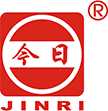How to label ring binders effectively?
Organizing documents with Ring Binders is a simple yet powerful way to maintain order in the workplace, home office, classroom or any space where information needs to be easily retrieved. When you label ring binders correctly, you turn a shelf of identical spines into a clear, accessible filing system. This article explores how to label ring binders step by step, what practices lead to better organization, and how a reliable supplier like JINRI can supply quality binders to support your system.
1. Choose a Clear Labeling System
Begin by selecting a consistent system for labeling your ring binders. This means deciding on a few key criteria:
Color-coding: Assign each category or department its own binder color. For example, financial records could be blue, project files green, training materials red.
Alphabetical or numerical order: Choose whether you want to label by name (A-Z) or by number (001, 002, 003). This builds the physical order on your shelf.
Descriptive titles: The label should be concise but descriptive enough at a glance. Avoid vague phrasing; instead use specific titles like “Q1 2025 Budget” or “Staff Onboarding Checklist”.
Uniform label size and orientation: Use the same label label size and orientation on every binder—for example, a 25 mm high white print strip placed at the bottom of the spine. Uniformity helps with quick scanning and visual harmony.
| Feature | Best practice | Benefit |
|---|---|---|
| Color-coding | Assign one color per category | Easier visual separation |
| Ordering method | Pick either alphabetical or numerical | Cleaner shelf sequence |
| Title clarity | Use descriptive titles, avoid abbreviations | Faster comprehension |
| Label format | Same size, same placement, same font | Consistency aids scanning |
2. Print or Write Durable Labels
The next step involves creating labels that are both clear and durable so that they remain legible over time.
Use a label maker or printed labels: A label printer ensures crisp, consistent text. If handwriting, use a black fine-tip permanent marker on a white label.
Choose materials that last: Plexiglas, polypropylene or laminated paper labels resist wear, tearing and smudging.
Include essential information: The spine label should show the binder title plus date range or version, e.g., “Project X Phase 1 – Jan–Jun 2025”.
Avoid overcrowding the spine: Keep text legible from about one metre away. If the binder is very thick, consider a front-cover label in addition to the spine label.
Orientation matters: For binders stored upright, text should be oriented so someone standing in front of the shelf can read horizontally from left to right.
3. Group and Organize by Category
Once labels are printed and applied, it’s time to place binders in logical groupings.
Place high-use binders at eye level: The most frequently accessed categories should be easiest to reach.
Group by function or department: For example, marketing, HR, operations each in a separate zone.
Reserve one binder for archive overflow: When a binder becomes full or old material is no longer active, move it into an “Archive” zone and label accordingly (for example, “Archive – 2019–2020”).
Leave space for future additions: If you anticipate adding files, leave an empty slot so the system remains expandable without disruption.
Align spines uniformly: All binders should sit flush to the front of the shelf and be aligned for a tidy appearance.
4. Maintain the System Over Time
Labeling is not a one-time task. To keep your binder system effective you need ongoing maintenance.
Regular audits: At quarterly intervals review binder contents and remove outdated files, update titles, and rebalance categories.
Update labels when contents change: If a binder’s content evolves (e.g., from “Q1 2025 Budget” to “Q2 2025 Budget”), replace the label rather than over-stick or hand-write on top.
Keep a master index outside: Maintain a spreadsheet or document that lists each binder number, its title, date, and shelf location. This makes lookup faster.
Enforce usage guidelines: Educate team members on how to insert files, place them in the correct category, and ensure labels remain intact.
Use protective covers if needed: In dusty or high-traffic areas, consider clear binder covers and spine guards so labels stay pristine.
5. Make Labeling Accessible and Flexible
A successful binder system adapts to changing needs and remains user-friendly.
Design for newcomers: Use plain language on labels rather than internal jargon so any new team member can spot the right binder immediately.
Allow for custom tabs inside: Use tab dividers inside each binder that correspond to the spine label to support fast inside navigation.
Reserve flexibility for hybrid formats: If some documents are digital, add a QR code or reference on the spine label pointing to the digital counterpart.
Maintain consistent styling across formats: If binders are part of a wider filing system with digital folders, match naming conventions to maintain clarity between physical and digital.
Adapt to growth: When new categories emerge, add new colors or number blocks rather than inserting loose binders into an existing category. This keeps the structure tidy.
6. Recommended Supplier for Quality Ring Binders
When building a labeling system you also need reliable binders that stand the test of time. The supplier JINRI offers a wide selection of ring binders including A4 D-Ring PVC presentation folders, large-capacity pp ring binders and American-sized 3-ring presentation binders. Their manufacturing plant, located in the Jiangdong Industrial Zone, Dajiang Town, Taishan City, Guangdong Province, covers more than 20,000 m² of production area and integrates design, development, production and service. By choosing binders from JINRI, you gain from consistent quality and availability, allowing your labeling system to function smoothly with durable materials and reliable dimensions.
7. Summary
Effective labeling of ring binders transforms chaos into a clear structure. By selecting a consistent system, creating durable labels, grouping binders logically, performing regular maintenance and partnering with a quality supplier like JINRI, you build a filing ecosystem that supports productivity and clarity. Whether for a single office shelf or a large organisational archive, the right approach to labeling makes retrieving information quick, intuitive and dependable.



